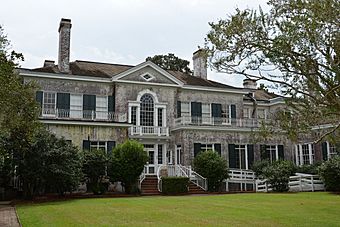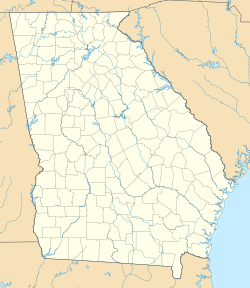Pebble Hill Plantation facts for kids
Quick facts for kids |
|
|
Pebble Hill Plantation
|
|
 |
|
| Nearest city | Thomasville, Georgia |
|---|---|
| Area | 3,000 acres (1,200 ha) |
| Built | 1934 |
| Architect | Abram Garfield |
| Architectural style | Colonial Revival, Classical Revival |
| NRHP reference No. | 90000146 |
| Added to NRHP | February 23, 1990 |
Pebble Hill Plantation is a historic place and museum. It is located near Thomasville, Georgia. This plantation is listed on the National Register of Historic Places. This means it is an important site recognized for its history.
Contents
A Look Back at Pebble Hill
Early Days and First Owners
Pebble Hill Plantation started in the 1820s. Thomas Jefferson Johnson built the first house there. After he passed away, his daughter, Julia Ann, and her husband, John H. Mitchell, inherited the property. They hired an English architect named John Wind. He designed a new, grand house for them. People who were enslaved worked on the plantation. They grew important crops like cotton, tobacco, and rice.
New Owners and Changes
In 1896, Howard Melville Hanna bought the plantation. His daughter, Kate, took over in 1901. She changed Pebble Hill into a place for hunting. The main house burned down in 1934. After that, architect Abram Garfield designed a completely new mansion. This new house was finished in 1936.
Becoming a Public Museum
After Kate's death, her daughter, Elizabeth "Pansy" Ireland, inherited Pebble Hill. Pansy Ireland created the Pebble Hill Foundation. Thanks to this foundation, the plantation is now open for everyone to visit. It works as a museum today.
Oldest Film of Georgia
The University of Georgia has a special collection. It is called the Pebble Hill Plantation Film Collection. This collection is believed to hold the oldest known moving picture of Georgia. This film dates all the way back to 1917.
More to Explore
- Ochlocknee Missionary Baptist Church: This church was started in 1848. It was founded by enslaved people. It was originally located near Pebble Hill Plantation.



